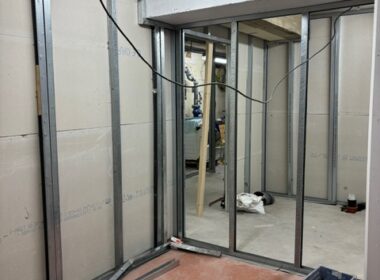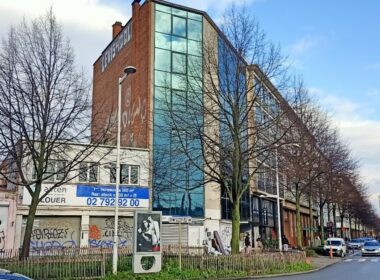Few buildings in Belgium are designed using the principle of biomimicry, an approach inspired by the ingenious, simple and sustainable solutions put in place by nature over billions of years. Should and can today’s architects incorporate such thinking and elements into their designs? We discuss this topic with Marc Somers (Somersespace), Steven Ware and Ivan Franck (ArtBuild Architects).
“Learn your lessons in nature, that is where our future lies,” Leonardo da Vinci supposedly said. Marc Somers, managing architect at Somersespace, interprets this as, “We may be architects or urban planners, but nature was an architect before us.” Some historians suggest that biomimicry has always existed, citing the example of the invention of the wheel inspired by the work of dung beetles. But what can animals, insects and plants teach us about living in a way that respects the planet? How can we translate their creativity, their adaptation to the climate, safety and their direct environment into materials, designs and systems? And, most importantly, how can we move from the proposal phase (during a competition, for example) to the reality of construction, while remaining within planned and controlled normative, administrative and budgetary frameworks?
Conscious biomimicry is very recent
This is a significant challenge, especially since, while there are many examples of nature’s ingenuity, their conscious ‘translation’ into architecture and construction is recent. “The prevailing idea in the 20th century was that architecture should be dominated by machines,” says Steven Ware, partner architect at ArtBuild Architects and director of the Paris office. “Buildings were ‘inhabited machines’. Fascinated by objects, we have lost our view of nature, which has created a split between the world of architectural creation and the living world. Fortunately, over the past decade, designers and architects have been developing a common lexicon with technicians, and it is the living organism that now inspires us.”
Multiple sources of inspiration
But inspired by whom? For Steven Ware, “The tree is an emblematic element, attached to its resources, sequestering carbon, hosting and encouraging biodiversity, stabilising the climate via hygrometry… .” And to also quote the living organisms which, particularly in the sea, synthesise and produce silica cold whereas our industries spend a lot of energy and heat producing the same material to make glass. Marc Somers cites the anthill and its natural urbanisation – “a well-structured place where each compartment has a specific purpose” – or dragonfly wings which, thanks to their veins, are able to carry several times their weight, a good example for load supports in buildings.
For or against formal biomimicry?
Like Leonardo da Vinci who was inspired by birds when designing his flying machines, some architects design buildings in the shape of a flower, a shell or a giant butterfly. Marc Somers does not approve of this kind of ‘copy and paste’ approach, “What is the benefit of a project being biomimetic in a formal way if it is neither human, nor on the scale of a city, nor respectful of nature and humans?” “The danger,” he adds, “is in wanting to graft nature into our daily lives: an ‘organ rejection’ could occur and do more harm than good.” Marc Somers also sees biomimicry as being more suited to the technical search for solutions than to an architectural form or style.
Some recent examples:
Our country has very few examples of buildings inspired by biomimicry. In Brussels, ArtBuild Architects designed Covent Garden, a 100 m high office building (80,000 m²) that has a grey water and black water treatment system using phytosanitary plants. Ivan Franck, architect and project manager at ArtBuild Architects, cites the ongoing construction of the Montego project (ARCHI 2000) and the future renovation of the Loi 66 building, also in Brussels.
Marc Somers mentions other exemplary projects that take into account urbanistic, environmental, participative and bioclimatic aspects, and thus consider the building in relation to its environment: a mixed housing estate for the elderly and families (Jambes) that follows contour lines and allows natural energy and ventilation, the redevelopment of Place Dumon (Woluwe-Saint-Pierre), where everything has been designed according to and with the help of nature, the trees, the river, agriculture, wind and natural light, and two projects from his office – one in Morocco, designed according to the movement of animals, and the other in the Congo, with a library designed according to a central axis that uses the technique of the wind tower invented 4,000 years ago by the Egyptians.
For which projects?
Is biomimicry better suited to certain types of project? Yes, according to Steven Ware, “The more centralised the decision-making power of the project, the easier it is to convince stakeholders to go down the biomimicry route. In general, the service sector is more suitable than housing, as there is more opportunity for material and systemic innovation in office design.” For him, regardless of the sector, however, biomimicry is a ‘plus’ for reducing energy consumption and protecting against overheating. In addition to the management of light and energy and thermoregulation, Marc Somers highlights as an advantage of biomimicry the benefit of having functional materials and light, resistant structures.
Biomimicry, for life
It is well known that the ‘natural life cycle’ of an office building is very short, at 20 years on average, says Steven Ware. This is primarily due to a design that did not take into account a possible change of use or to a concern for compliance with standards. “That’s why, when we design a building, we now analyse the lifespan of its various components. Foreseeing the death of a building is also a form of biomimicry,” he concludes.
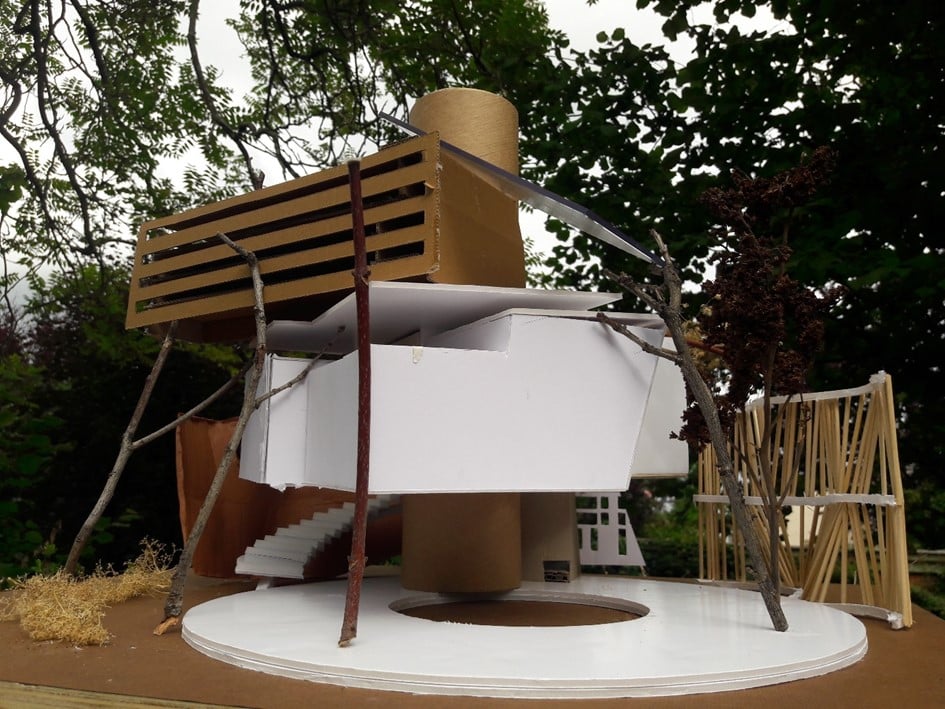
Volumetric study model of a library project in the Congo, designed according to a central axis using the wind tower technique. Photo©Atelier Espace Architectural Marc Somers
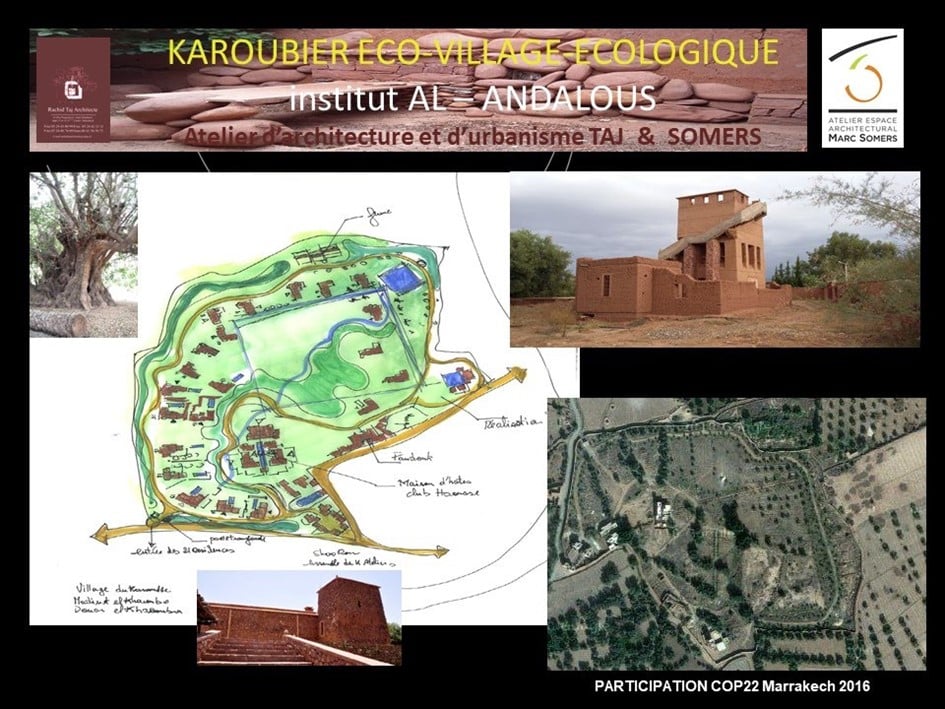
Ecovillage Le Karoubier, in Marrakech (Morocco), built taking into account the movements of animals ©Atelier Espace Architectural Marc Somers + Rachid Taj.

Musa is a collective reflection project that takes our future as a source of inspiration and invites us to ask ourselves the right questions. Pictures©ArtBuild
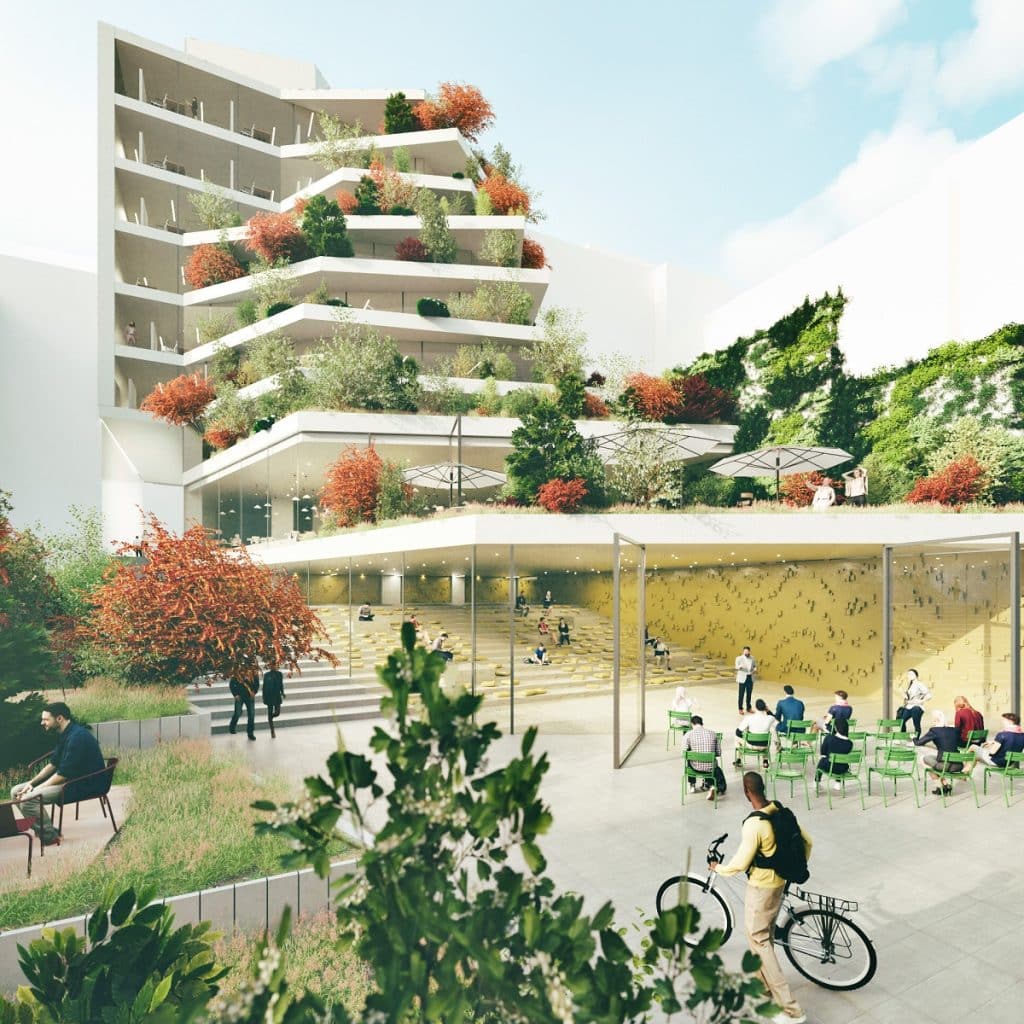
The concepts developed by the Loi 66 project include opening up the block to the public space, a horizontal and vertical green corridor, rice field type terraces and the addition of local biodiversity. Pictures©ArtBuild
Read also: Using electrical engineering for energy transition; ORI highlights the role of consultancy and engineering firms in Brussels; Agglomerated stone and digital manufacturing techniques to restore heritage buildings; For responsible builders.


